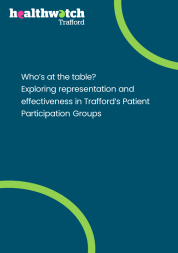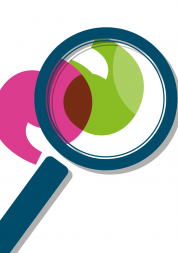Access to Sexual Health Services in Trafford
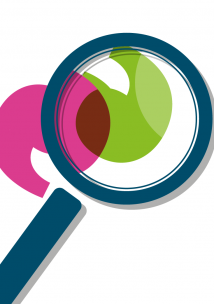
Demand for sexual health services is growing, with rates of sexually transmitted infections (STIs) on the rise both locally and nationally as well as increases in rates of abortions in younger age groups. Working together with Trafford Council’s Public Health Team, Healthwatch Trafford took a closer look at how people accessed sexual health services, as well as which ones, in the borough.
Our findings revealed that most people went looking for sexual health information online and by speaking to friends, with 47% looking for advice on social media. With online resources becoming the first port of call for many, it is vital that verified, trustworthy information is easily accessible to prevent harm and the spread of misinformation. We echo recommendations made to improve search engine optimisation of trusted sites and to ensure clear signposting on existing service websites.
We also found that sexual health/family planning clinics acted as hubs where people looked for a wide range of advice and services. However, waiting times were a barrier to care, reflecting the picture across the NHS generally.
We have made several recommendations in response to our findings, which we hope will improve patient experience.
Cllr Jane Slater, Trafford Council’s Executive Member for Healthy and Independent Lives, said:
“It has been good to work with Healthwatch to find out more about experiences of sexual health services in Trafford but worrying that rates of STIs are rising – as they are all over the UK – leading to pressures on services. We recognise that people aren’t always getting their information from trusted sources, and we continue to encourage Trafford residents to reach out to their GP, clinic or pharmacist for reliable advice and treatment.”
Key Findings
- Respondents were most likely to seek sexual health information either online or speaking to friends. Although there are benefits to these as sources of information and access to support, it is vital to ensure individuals are equipped to identify when information shared may be unregulated, inaccurate or harmful.
- For those who sought information via social media, the most popular platform was Facebook.
- Sexual Health clinics were the most frequently mentioned of all services. This was also the service for which respondents told us they were looking for the widest range of advice, care or support.
- Most respondents were able to access the services they required and feedback for service was largely positive.
- Waiting times for Sexual Health clinics was the main barrier to access to this service.
- Although we heard some positive feedback generally about services, we also heard various concerns regarding difficulties with communication and obtaining appointments

37 people accessed sexual health or family planning clinics, 8 used GP services for sexual health care, 5 used a pharmacy, and 4 used a voluntary service. 3 accessed abortion services and a further 3 sought out services for young people.
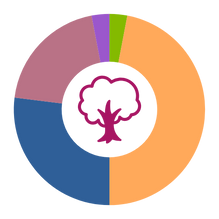
3% of people who responded to our survey were 17 or under. The majority, 47%, were aged 18 to 34. 27% were aged 35-44, 20% were 45-65, and 3% were between the ages of 66 and 79.
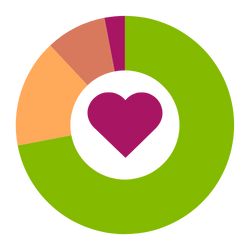
Most of our responses – 72% - came from people identifying as heterosexual/straight. 16% were from gay respondents, and 9% from people identifying as bisexual. The remainder preferred not to say.
20% of our respondents were either married or in a civil partnership, 2% were engaged, and 14% were living with a partner. 47% were single, and 5% were divorced or separated. 2% of the people we heard from were widowed. The remainder preferred not to say or selected ‘other’.
Recommendations
-
Ensure verified sexual health information is easily accessible online
To ensure those accessing sexual health information online and from friends are equipped to make informed decisions regarding their sexual health, it is vital to make verified, trustworthy information easily accessible. We echo recommendations made to improve search engine optimisation of trusted sites and to ensure clear signposting within organisational websites. Also, to train clinicians to assess external sites and recommend them to patients6.
-
Address waiting times
There is indication that demand for Sexual Health Services specifically has an impact on access. Clear communication about alternatives (such as pharmacies) to the main sexual health clinics and what is available could reduce demand and ensure more efficient access to care for patients.[1] This could include effective signposting when appointments are full and/or communication to ensure that at-a-glance patients are able to identify the type of care they need and where to access it.
- Simplify booking processes
Some individuals are finding the current appointing booking processes difficult. These processes could be made more straightforward and open by relaxing appointment booking window restrictions and ensuring staff are available to take incoming calls.
